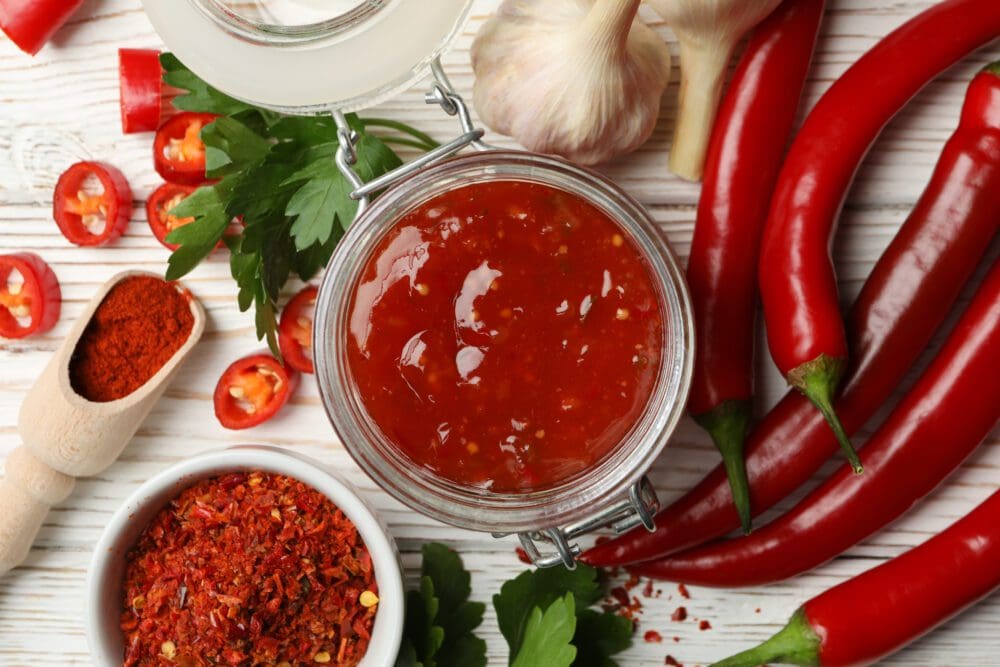Making your own hot sauce at home can lead you down a path towards creating the best hot sauce that you have ever tried in your life. To start, you can make quick non-fermented versions of hot sauce that combine hot peppers and vegetables cooked down in vinegar and water. If you want to take things a step further, consider lacto-fermenting your peppers and vegetables in a 2-2.5% salt solution, and then add some vinegar and sugar after you have let the vegetables ferment for a few weeks.

How to Make Fermented Serrano Pepper Hot Sauce at Home
Ingredients
Ingredients for Fermentation:
- ¼ fresh pineapple (150g, rind removed, roughly chopped)
- 20 serrano peppers (200g, stems removed, cut in quarters)
- 2 Jalapeno peppers (30g, stems removed, cut in quarters)
- 2 small white onions (175g, roughly chopped)
- 2 small carrots (70g, peeled and roughly chopped)
- 6 cloves garlic (20g, peeled)
- 600 g water
- 32 g Kosher salt
Post-Fermentation Ingredients:
- 100 g ½ cup white granulated sugar, optional
- 10 oz apple cider vinegar
- 10 oz water
Instructions
- Try to buy organic produce, where the exterior of the fruit is less likely to contain pesticides.
- Clean and sanitize your mason jar.
- Add the chopped pineapple to the Mason jar.
- Add the hot peppers on top of the pineapple.
- Add the chopped white onions, carrot, and garlic cloves.
- Stir together 600g of room-temperature water with 32g of Kosher salt.
- When the salt has completely dissolved, wait until the water returns to a clear color, or about 2 minutes.
- Press down on the vegetables with a spoon, and pour the salt water brine on top until the vegetables and pineapple are completely covered.
- Add a glass or ceramic weight to keep everything submerged below the surface of the salt water brine.
- Secure the contents with a lid, and open up the contents every day, as gas will escape from the vegetables and need to be released from the jar periodically during the fermentation process.
- Note at this stage that your ideal fermentation environment should be dark with a steady temperature of roughly 65˚-70˚F.
- Every day, open the jar to release the built-up CO2, and to check on the progress of your fermentation.
- Ensure that the vegetables are submerged in the brine daily, and wait for roughly two or three weeks.
- After you have waited for the roughly three weeks and you are ready to finish the fermented hot sauce, transfer the fermented contents to a blender container.
- Blend on high speed until the contents arrive at a puree consistency.
- In a small sauce pot on the stove, combine remaining apple cider vinegar, water, and white granulated sugar in a pot on the stove.
- Increase the heat to medium, and stir until the sugar is dissolved.
- Allow the liquid to cool, and then mix with the blended fermented peppers and vegetables from earlier.
- Pass the contents through a fine-mesh strainer.
- Taste your strained hot sauce, and add additional Kosher salt or white granulated sugar, if desired.
- Transfer the final strained sauce into individual bottles using a funnel.
- Store in the refrigerator until you are ready to use.
